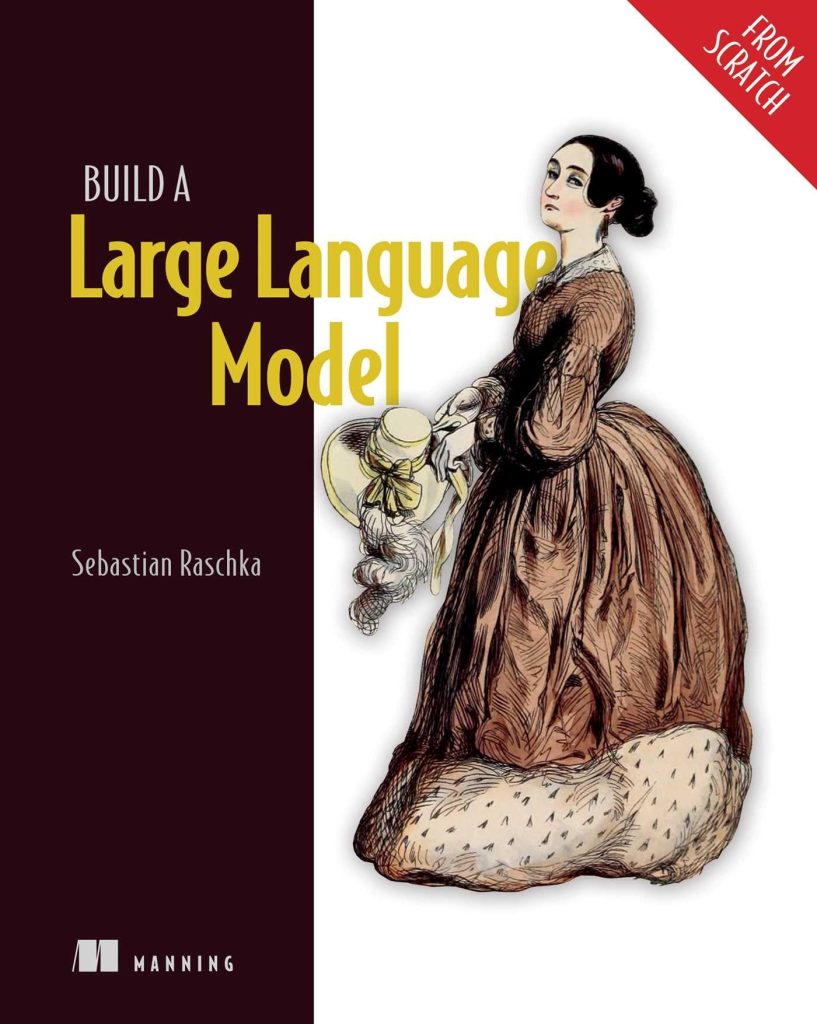
At the core of MongoDB’s flexibility lies its data structure, which is primarily built around the idea of documents and collections. In contrast to traditional relational databases that utilize tables, MongoDB adopts a document-oriented approach that allows for storing data in a format similar to JSON, known as BSON (Binary JSON). This structure enables a more intuitive representation of complex data types, including nested arrays and objects, facilitating the modeling of real-world entities.
MongoDB stores data in collections, which can be thought of as analogous to tables in relational databases. Each collection consists of documents, which are individual records that can vary in structure. This variability allows developers to store different attributes for different documents within the same collection.
For example, think a collection of user profiles. One user’s profile might include details such as username, email, and preferences, while another user’s profile could have additional fields like social media links. This flexibility supports rapid application development, enabling developers to iterate on data models without the constraints of a predefined schema.
from pymongo import MongoClient
# Establish a connection to the MongoDB server
client = MongoClient('mongodb://localhost:27017/')
# Select the database
db = client['user_database']
# Define a sample user profile
user_profile = {
'username': 'john_doe',
'email': '[email protected]',
'preferences': {
'language': 'English',
'theme': 'dark'
},
'social_media': {
'twitter': '@johndoe',
'github': 'johndoe'
}
}
# Insert the user profile into a collection
db.user_profiles.insert_one(user_profile)
The schema-less nature of MongoDB allows for dynamic data representation, which is particularly useful in scenarios where data evolves over time. However, this flexibility comes with its own set of challenges. Developers must carefully ponder how to structure their data to ensure efficient querying and data retrieval.
One of the key aspects of MongoDB’s data structure is the use of embedded documents and arrays. This feature allows for related data to be stored within a single document, reducing the need for multiple queries and joins, which are common in relational databases. For instance, if we wanted to model a blog post and its associated comments, we could embed the comments directly within the post document.
blog_post = {
'title': 'Understanding MongoDB Data Structures',
'author': 'Jane Smith',
'content': 'This post explains how to work with MongoDB data structures.',
'comments': [
{'user': 'alice', 'message': 'Great post!', 'date': '2023-10-01'},
{'user': 'bob', 'message': 'Very informative.', 'date': '2023-10-02'}
]
}
# Insert the blog post document
db.blog_posts.insert_one(blog_post)
This capability to nest documents simplifies data access and enhances performance, especially for read-heavy applications. It’s also vital to keep in mind MongoDB’s limitation on document size, which is capped at 16MB. Thus, when designing your data model, it’s prudent to weigh the benefits of embedding versus referencing related data.
Understanding the data structures inherent in MongoDB is fundamental for using its full potential. Using the rich features of documents, collections, and the ability to store complex, nested data can lead to more efficient applications that are easier to develop and maintain. By mastering these principles, you can effectively capitalize on the unique advantages that MongoDB offers in the realm of database management.
Schema Design Principles for NoSQL Databases
When designing schemas for NoSQL databases like MongoDB, it is essential to evolve beyond the traditional constraints of relational database management systems (RDBMS). In MongoDB, while the schema-less paradigm offers flexibility, it also demands a thoughtful approach to ensure optimal performance and maintainability. Here are several key principles to think when crafting an effective schema in MongoDB.
1. Understand Your Access Patterns
The first step in designing a schema is to comprehensively understand your application’s read and write access patterns. Determine what data will be retrieved in bulk or often and structure your collections accordingly. For instance, if certain data is frequently accessed together, they should likely reside in the same document. This reduces the need for multiple queries, enhancing performance.
2. Favor Embedding Over Referencing
When dealing with related data, embedding documents is generally preferred. This approach minimizes the number of queries needed to retrieve related data. For example, think a scenario where a user has a set of orders; embedding the orders within the user document allows for a single query retrieval:
user = {
'username': 'jane_doe',
'email': '[email protected]',
'orders': [
{'order_id': 'A123', 'item': 'Laptop', 'quantity': 1},
{'order_id': 'B456', 'item': 'Mouse', 'quantity': 2}
]
}
# Insert the user document with embedded orders
db.users.insert_one(user)
This embedded structure makes accessing orders simpler and performant, especially in applications where reading user data along with their orders is frequent.
3. Think Document Size
Each document in MongoDB has a size limit of 16MB. While this may seem generous, it’s crucial to plan your data model carefully to avoid hitting this ceiling. If you anticipate that a document could grow too large, ponder breaking it out into a referenced structure or using pagination for embedded arrays to keep the document size manageable.
4. Use References Wisely
In cases where data needs to be shared across multiple documents or collections, ponder using references. This involves storing the ObjectId of one document within another, allowing you to establish relationships while maintaining normalized data. For example, in a blogging platform, you may want to reference authors in blog posts:
author_id = db.authors.insert_one({'name': 'Alice Johnson'}).inserted_id
blog_post = {
'title': 'Schema Design in MongoDB',
'author_id': author_id,
'content': 'This blog discusses schema design principles.',
}
# Insert the blog post with a reference to the author
db.blog_posts.insert_one(blog_post)
This link allows you to manage authors independently while still being able to associate them with their respective blog posts. Just ensure you have the appropriate queries to fetch related data when needed.
5. Be Mindful of Data Redundancy
While normalization is less critical in NoSQL databases, some level of data redundancy can improve performance. For example, consider storing user details within each order document if those details are frequently accessed alongside orders. This approach may increase storage requirements, but it can improve read performance by reducing the number of joins or queries:
order = {
'order_id': 'C789',
'user': {
'username': 'jane_doe',
'email': '[email protected]'
},
'item': 'Keyboard',
'quantity': 1
}
# Insert the order with embedded user details
db.orders.insert_one(order)
The trade-off is a careful balance between performance and storage. Analyze your application’s specific needs to determine the best approach.
6. Plan for Scalability
As your data volume grows, so too will the need for scalable architectures. When designing your schema, think about how it will perform as data scales. MongoDB’s sharding capabilities allow horizontal scaling, but your schema should remain conducive to this approach. Avoid using complex queries that may become inefficient as the dataset expands.
Adhering to these principles of schema design in MongoDB will empower you to reap the benefits of its flexible data model while maintaining efficiency and performance. The decisions made in the design phase can have long-lasting impacts on your application, making it imperative to approach this with careful consideration and foresight.
Using Pymongo for Efficient Data Manipulation
Using Pymongo effectively allows developers to harness the power of MongoDB for efficient data manipulation. Pymongo is the official MongoDB driver for Python, providing a simpler API to interact with MongoDB databases. By understanding how to utilize Pymongo’s features, developers can streamlining data operations, optimize performance, and enhance overall application efficiency.
In Pymongo, establishing a connection to your MongoDB instance is the first step. That is typically done using the MongoClient class, which allows you to specify the MongoDB URI. Here’s how to initialize a connection:
from pymongo import MongoClient
# Connect to MongoDB on the default host and port
client = MongoClient('mongodb://localhost:27017/')
Once connected, you can select a database and a collection to work with. The database and collection act as containers for your documents, which are the actual records you will manipulate:
# Select the database db = client['example_database'] # Choose a collection within that database collection = db['example_collection']
To insert documents, Pymongo provides methods like insert_one and insert_many. These methods enable you to add single documents or batches of documents efficiently. For instance, inserting a single document is done as follows:
single_document = {
'name': 'Alice',
'age': 30,
'city': 'Wonderland'
}
# Insert a single document
collection.insert_one(single_document)
On the other hand, if you want to insert multiple documents concurrently, you can use insert_many, which is optimized for such operations:
multiple_documents = [
{'name': 'Bob', 'age': 25, 'city': 'Builderland'},
{'name': 'Charlie', 'age': 35, 'city': 'Chocolate Factory'}
]
# Insert multiple documents
collection.insert_many(multiple_documents)
Data retrieval is equally essential. Pymongo provides a rich set of query capabilities to fetch documents based on specific criteria using the find method. Here’s an example of how to retrieve all documents from a collection:
for doc in collection.find():
print(doc)
For more precise queries, you can pass filters to the find method. For example, to find all documents where the age is 30:
for doc in collection.find({'age': 30}):
print(doc)
Pymongo also supports advanced query operations, such as using logical operators. If you need to find all documents where the age is greater than 28, you can do so like this:
from pymongo import MongoClient
# Fetch documents with age greater than 28
for doc in collection.find({'age': {'$gt': 28}}):
print(doc)
Updating documents is another crucial operation, and Pymongo provides update_one and update_many methods for this purpose. For example, if you want to update the age of a specific user:
collection.update_one(
{'name': 'Alice'},
{'$set': {'age': 31}}
)
If you need to update multiple documents, update_many comes in handy:
collection.update_many(
{'city': 'Wonderland'},
{'$set': {'status': 'active'}}
)
Deletion of documents is simpler as well. You can remove documents using delete_one and delete_many methods. For example, deleting a single document would look like this:
collection.delete_one({'name': 'Bob'})
To delete multiple documents, you can specify criteria:
# Select the database db = client['example_database'] # Choose a collection within that database collection = db['example_collection']
0
Pymongo’s aggregation framework allows for complex data processing directly within the database. This enables operations such as grouping, filtering, and sorting without pulling all records into your application. For instance, to retrieve the average age of users, you can use the aggregate method:
# Select the database db = client['example_database'] # Choose a collection within that database collection = db['example_collection']
1
With these capabilities in Pymongo, you can manipulate data efficiently, enhancing the performance of your MongoDB applications. The design of Pymongo promotes efficient interactions with your MongoDB instance, allowing developers to focus on building robust applications without getting bogged down in the intricacies of data manipulation.
Advanced Query Techniques in MongoDB
MongoDB’s querying capabilities are one of its standout features, providing developers with the tools necessary to retrieve and manipulate data in powerful, flexible ways. Understanding these advanced query techniques can significantly enhance the effectiveness of your database interactions, making it easier to extract insights from complex datasets. Here, we’ll explore some key advanced querying techniques available in MongoDB.
At the heart of MongoDB’s querying engine is the ability to construct complex queries that leverage various operators and constructs. The find() method is fundamental in this process and allows for sophisticated queries that can filter data based on multiple conditions. For instance, to retrieve documents that match a combination of criteria, you can use logical operators such as $and and $or.
# Example: Fetch users who are either 25 years old or live in 'Wonderland'
users = collection.find({
'$or': [
{'age': 25},
{'city': 'Wonderland'}
]
})
for user in users:
print(user)
Moreover, MongoDB supports a wide range of comparison operators, including $gte (greater than or equal), $lte (less than or equal), and $ne (not equal). This flexibility allows developers to construct rich queries tailored to their application’s specific requirements.
# Example: Fetch users older than 20 but younger than 30
young_users = collection.find({
'age': {'$gt': 20, '$lt': 30}
})
for user in young_users:
print(user)
Another powerful feature is the ability to use projection to control which fields are returned in the query results. By default, MongoDB returns all fields of the matched documents, but you can specify which fields you’d like to include or exclude. That’s particularly useful when working with large documents and helps in optimizing performance by reducing the amount of data transmitted.
# Example: Fetch only the name and email fields of users
specific_fields = collection.find({}, {'name': 1, 'email': 1})
for user in specific_fields:
print(user)
Aggregation is another cornerstone of advanced querying in MongoDB. The aggregate() method enables complex data transformations and calculations, similar to SQL’s GROUP BY functionality. Using the aggregation pipeline, you can perform operations such as filtering, grouping, and sorting in a single call, which is both efficient and powerful.
# Example: Calculate the average age of users grouped by city
pipeline = [
{
'$group': {
'_id': '$city',
'average_age': {'$avg': '$age'}
}
}
]
average_ages = collection.aggregate(pipeline)
for result in average_ages:
print(f"City: {result['_id']}, Average Age: {result['average_age']}")
The use of indexes is important for optimizing query performance in MongoDB. By indexing fields that are frequently queried, you can significantly reduce the time it takes to retrieve documents. MongoDB supports various types of indexes, including single-field, compound, and text indexes, each serving different use cases.
# Example: Create an index on the 'age' field
collection.create_index([('age', 1)]) # 1 for ascending order
Once you have defined indices, you can ensure queries take advantage of these optimizations, improving response times and overall application performance. Monitoring your application’s performance using the explain() method can also provide insights into how queries are executed and whether indexes are being utilized effectively.
# Example: Review query execution details
explanation = collection.find({'age': 25}).explain()
print(explanation)
Ultimately, mastering advanced query techniques in MongoDB will empower you to extract and manipulate data with precision. Whether you are using simple filters, crafting complex aggregations, or optimizing with indexes, using these tools effectively can lead to more efficient and insightful data interactions. By combining MongoDB’s flexible querying capabilities with thoughtful design principles, developers can build highly performant and responsive applications that meet the dynamic needs of users.
Indexing Strategies for Performance Optimization
Indexing in MongoDB is akin to putting a bookmark in a massive book, which will allow you to leap directly to specific information without traversing every page. In a database context, indexes are essential for maximizing the performance of queries, especially as the dataset grows. By implementing the right indexing strategies, you can ensure that your MongoDB applications remain efficient and responsive, even under increasing workloads.
In MongoDB, indexes are data structures that store a small portion of the data set in an easy-to-traverse form. By default, MongoDB creates an index on the _id field of every document, which ensures that each document can be retrieved quickly. However, adding your own indexes especially important for optimizing query performance based on your application’s specific needs.
To create an index in MongoDB, you use the create_index method provided by Pymongo. For instance, if you know that users often query by age, you can create an index on the age field:
collection.create_index([('age', 1)]) # 1 for ascending order
This single-field index allows MongoDB to rapidly locate documents that match a specific age, dramatically reducing query time compared to scanning the entire collection. MongoDB also supports compound indexes, which are indexes on multiple fields, and these are particularly powerful when you need to query on more than one attribute concurrently.
For example, think a scenario where your application frequently searches for users based on a combination of age and city:
collection.create_index([('age', 1), ('city', 1)])
This compound index would significantly enhance performance when executing queries like:
result = collection.find({'age': 30, 'city': 'Wonderland'})
However, while indexes can improve read operations, they do incur a cost. Each index requires additional storage and maintenance during write operations. Therefore, it is vital to strike a balance between read performance and write efficiency. Analyze your application’s queries to determine which fields are most frequently accessed and target those for indexing.
Furthermore, it is also beneficial to leverage the power of text indexes when your queries involve searching for keywords within string fields. If you have a collection of articles and want to implement full-text search capabilities, you can create a text index as follows:
collection.create_index([('content', 'text')])
With this text index, you can perform text searches. For instance, searching for articles containing the word “MongoDB” can be easily achieved:
result = collection.find({'$text': {'$search': 'MongoDB'}})
It is also important to consider index cardinality—how unique the indexed values are. Indexes work best when they target highly selective fields. For example, an index on a field with only two possible values (like a boolean flag) may not provide the performance gains seen from an index on a field with many unique values, such as user IDs or email addresses.
After creating indexes, it is essential to monitor their effectiveness. The explain() method can be used to analyze query execution plans, revealing how MongoDB is using indexes. For example:
explanation = collection.find({'age': 30}).explain()
This will provide insights into whether the query is using the index as intended or if it’s falling back to a collection scan, highlighting areas where further optimization may be required.
Crafting an efficient indexing strategy in MongoDB can dramatically improve your application’s performance. By carefully selecting which fields to index, creating both single-field and compound indexes, and using text indexing where necessary, you can ensure that your database operations remain rapid and efficient. Remember, the key to successful indexing lies in understanding the access patterns of your application and continuously monitoring and optimizing the indexing strategy as those patterns evolve.
Best Practices for Data Modeling in MongoDB
When working with MongoDB, adhering to best practices for data modeling is important for ensuring optimal performance, scalability, and maintainability of your application. While MongoDB’s schema-less design offers significant flexibility, it can also introduce complexity if not approached thoughtfully. Here are several best practices to think when modeling your data in MongoDB:
1. Embrace the Document Model:
MongoDB is a document-oriented database that thrives on its ability to store data in a way that reflects real-world entities. Take advantage of this by embedding related data within documents rather than spreading it across separate collections. For example, when modeling a blog platform, a blog post can contain an embedded array of comments, which keeps the post and its comments in one place, making retrieval simpler and efficient:
blog_post = {
'title': 'Best Practices for MongoDB',
'author': 'Luke Douglas',
'content': 'This article discusses best practices for data modeling in MongoDB.',
'comments': [
{'user': 'alice', 'message': 'Excellent read!', 'date': '2023-10-03'},
{'user': 'bob', 'message': 'Very helpful.', 'date': '2023-10-04'}
]
}
# Insert the blog post with embedded comments
db.blog_posts.insert_one(blog_post)
2. Understand Your Query Patterns:
Before finalizing your data model, it’s essential to analyze how your application will interact with the data. Knowing whether certain fields or documents will be queried together frequently allows you to make informed decisions regarding data embedding versus referencing. For instance, if an application interfaces with products and their reviews regularly, it may make sense to embed reviews within this product documents:
product = {
'product_id': '12345',
'name': 'Smartphone',
'reviews': [
{'user': 'charlie', 'rating': 5, 'comment': 'Best smartphone ever!'},
{'user': 'dave', 'rating': 4, 'comment': 'Great reasonable investment.'}
]
}
# Insert the product with embedded reviews
db.products.insert_one(product)
3. Plan for Document Size Limitations:
While MongoDB allows greater flexibility in document structure, it is essential to keep in mind the 16MB document size limit. As you model your data, ponder how much information will be stored within a single document. If you anticipate that a document might grow large due to embedded arrays or complex objects, it may be wise to normalize those elements into separate collections and use references instead:
# Separate product reviews into a different collection if they grow large
review = {
'product_id': '12345',
'user': 'charlie',
'rating': 5,
'comment': 'Best smartphone ever!'
}
# Insert the review into the reviews collection
db.reviews.insert_one(review)
4. Utilize Schema Validation:
Although MongoDB is schema-less, you can still enforce some level of structure using schema validation. By defining validation rules for your collections, you can ensure that documents conform to specific criteria. This helps maintain data integrity while still benefitting from MongoDB’s flexibility:
# Define a validation schema for users
db.create_collection('users', validator={
'$jsonSchema': {
'bsonType': 'object',
'required': ['username', 'email'],
'properties': {
'username': {
'bsonType': 'string',
'description': 'must be a string and is required'
},
'email': {
'bsonType': 'string',
'description': 'must be a string and is required'
}
}
}
})
5. Keep Scalability in Mind:
As your application grows, so will your data. When designing your data model, think how it will scale. MongoDB supports horizontal scaling through sharding, but your data model should be conducive to this approach. Aim to design collections that will distribute evenly across shards to avoid hot spotting and ensure balanced workloads:
# Example of sharding a collection on the 'username' field
db.admin.enableSharding('user_database')
db.admin.shardCollection('user_database.users', {'username': 'hashed'})
6. Monitor and Adapt:
Finally, data modeling is iterative. Regularly monitor your application’s performance and data access patterns, and be prepared to adapt your data model as necessary. MongoDB’s rich set of tools for analyzing query performance can guide you in identifying inefficiencies. Use tools like the aggregation framework and the explain method to continually optimize your data access methods:
# Analyze how a query is executed
explanation = db.users.find({'username': 'jane_doe'}).explain()
print(explanation)
By applying these best practices, you can ensure that your MongoDB data model is not only efficient but also adaptable to the changing needs of your application. The decisions made during this phase will significantly influence the scalability, performance, and maintainability of your database systems.






